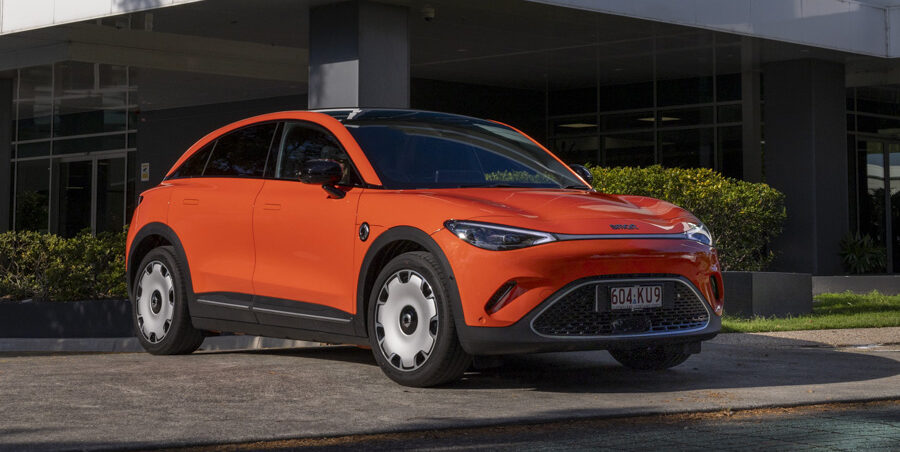The Australian Automobile Association (AAA) claims some brands are overestimating their EV’s range by as much as 23 per cent, providing owners with an unrealistic expectation of how far their car can travel before it needs plugging in.
The peak motoring body has released results of what’s claimed to be the first independent testing of electric vehicles that reveals how far electric cars can drive in the real world on a full charge.
However, diving deeper into the details of the testing shows it’s not as clear cut – or dramatic – as what the headlines scream.
READ MORE: Battery life fears debunked: VW ID.3 drops just 13km in range over 160,000km driving!
READ MORE: Home on the range: 2026 Chevrolet Silverado EV drives 1705km on a single charge … but read on to see why it’s not an official world record
READ MORE: Tesla Model 3 tops Ford Mustang Mach-E in real-world range test, BMW iX3 stars
According to the AAA, some brands are overestimating their EV’s range by as much as 23 per cent, providing owners with an unrealistic expectation of how far their car can travel before it needs plugging in.
The best-performing car of five EVs tested was the recently launched Smart #3 which had a tested range only five per cent shy of its 455km claim, with the compact SUV covering up to 432km before it needed charging.

The least impressive was the BYD Atto 3 that was 23 per cent off one of the range figures published by the manufacturer, with it also consuming as much as 21 per cent more energy on a journey.
It’s worth pointing out that BYD quotes two range figures for its EVs.
One uses the NEDC standard (essentially an outdated European standard), which is the standard the Australian Government requires car makers to test to as part of Australian Design Rule compliance.
The other is WLTP, or the Worldwide Harmonised Light Vehicles Test Procedure. The WLTP standard is what now applies in Europe and is seen to be more relevant (but still not accurate for everyone) to what you’d experience in the real world.
As with some other brands, BYD emphasises the WLTP figure on its website but publishes both figures in its online brochure and specifications sheets.
But it was the less relevant NEDC figure the AAA used for its testing. Calculated to the WLTP figure the range variation for the Atto 3 was 12 per cent.
It’s also worth pointing out that under similar AAA testing petrol and hybrid cars also typically used more fuel than their claim (a figure that is also calculated to the same NEDC government standard), in one case by up to 33 per cent.

Both the best-selling Tesla Model Y (533km) and the Kia EV6 (528km) were just eight per cent shy of their official claims.
Another strong seller, the Tesla Model 3, despite sharing the same hardware as the Model Y, was 14 per cent awry of the claimed range figure.
The AAA test program, while giving a clearer indication of real-world figures, may not be representative of what many owners will achieve in daily use.
Recorded during a 93km drive over an on-road circuit near Geelong, Victoria, between March and May, some commentators have pointed out that changing weather, temperatures, traffic and road conditions can all influence the EV range delivered.
Vehicles were also not tested to zero, with results based on the consumption achieved on the test loop.
More variation could have crept in from the test vehicles. The Smart #3 had reportedly already covered 4202km and the Tesla Model 3 29,880km.
As with petrol and diesel vehicles variations can creep in as a car ages. In the case of an EV battery degradation can reduce the range over time and an EV typically experiences higher degradation in its first year. It’s also unclear how each of the higher mileage vehicles had been treated; repeated DC fast charging can degrade batteries sooner, for example.
Commenting on the new real-world testing AAA Managing Director Michael Bradley said: “As more EVs enter our market, our testing will help consumers understand which new market entrants measure up on battery range.
“Our program will bring confidence to Australian fleets and families looking to buy an EV.”

But Federal Chamber of Automotive Industries chief executive Tony Weber put the counter-view.
“All vehicles, including EVs, sold in Australia are tested under strict laboratory conditions set out in Australian Design Rule 81/02,” said the head of the umbrella body of car brands sold in Australia.
“This consistent methodology ensures vehicles can be reliably compared, regardless of brand or model. Tests conducted outside the ADR process are influenced by many variables, including traffic, terrain, weather and driving style. No two drivers or journeys are the same.
“We support transparent, evidence-based information for consumers, but it must be consistent. When conflicting figures are published, it undermines confidence and causes unnecessary confusion.”


